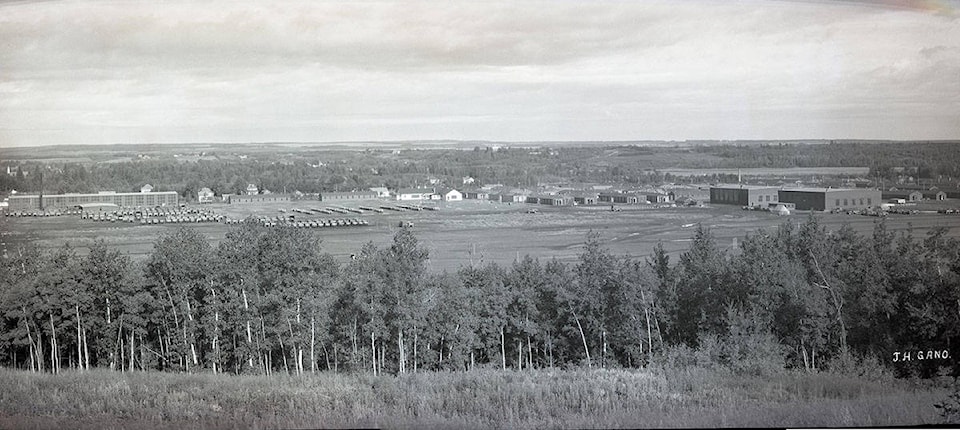One of the increasingly forgotten pieces of Red Deer history is the fact that during the Second World War, Red Deer was a site of a major military training facility, generally referred to as the A-20 Army Camp.
The announcement of the training centre was first made by the federal government on August 7, 1940. For the 2800 residents of the city, the scope of the forthcoming facility was staggering.
More than thirty buildings were to be constructed on a twenty hectare site northeast of 55 Street and Waskasoo (45) Avenue. Thirty-two officers and another 150 non-commissioned officers and men were to be stationed at the camp. As well, up to 1000 men were to be accommodated during a four week training period.
Work on the camp began almost immediately. Soon nearly 200 tradesmen were employed on the site. The facility meant that the city had to provide extensive sewer, water and electrical power hook-ups. In order to meet the costs, the city was forced to borrow money from the bank for operational expenses for the first time since 1924.
In early October 1940, the training camp, officially named the Non-Permanent Active Militia Training Centre (N.P.A.M.T.C) #130, was finally ready to be opened. However, as often happens with big events, there was chaos when 200 men showed up one day earlier than expected. The military authorities spent a frantic evening trying to find bunks for all of the men and enough rations to feed them supper. Eventually, all of the snags were straightened out. The next day the first group of 900 men received their medical examinations and began their one-month period of training.
As the militia camp became fully operational, its impact was felt throughout the community. Restaurants found it necessary to expand their premises and hotels enlarged their beer parlours. A number of the officers and permanent staff at the camp decided to bring their families to Red Deer to live. As a result, there was a significant shortage of housing in the city.
In the second week of November, 1940, the first class of soldiers finished their training with an air raid practice. A few days later, the next group of 1000 trainees started their stint at the camp.
The new arrivals were greeted with a sudden appearance of winter. Temperatures plunged to -30° C. A round of influenza swept through the camp. Several dozen men were laid up in the camp hospital, which did not have all of its furnaces hooked up.
In 1941, the federal government announced that the training period for men called-up under the National Service Act would be extended to four months from thirty days. Consequently, in March 1941, the military authorities announced that the militia training centre would be changed into an eight-week advanced training camp for the Royal Canadian Army Service Corps.
The new centre, which was to be named A-20, was to include 100 officers, 550 instructors, 500 active service men and 500 recruits in training. Work began on a number of new buildings. Large quantities of equipment and vehicles were transferred to Red Deer from other military installations.
In 1945, as the war began to draw to a close, the A-20 Camp was transformed into a training centre for recently discharged veterans. As such, it was renamed the Canadian Vocational Training Centre No. 8. Because of an escalating local housing shortage, suites were created for veterans and their families in the old barracks huts.
The camp continued to be put to new uses after the War. In 1947, the Red Deer School Division acquired a large portion of the camp and turned it into a dormitory high school for students from the surrounding rural areas as well as the City of Red Deer. One of the drill halls was turned into a community auditorium and gymnasium, the Memorial Centre. Part of the old camp site was used to build regional offices for the RCMP. The old motor pool building remained with the Department of National Defence and continues to serve as Red Deer Armouries to this day.
Red Deer historian Michael Dawe’s column appears every Wednesday.
